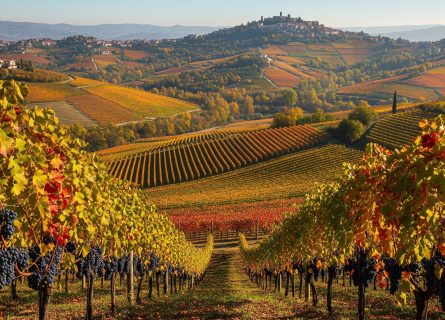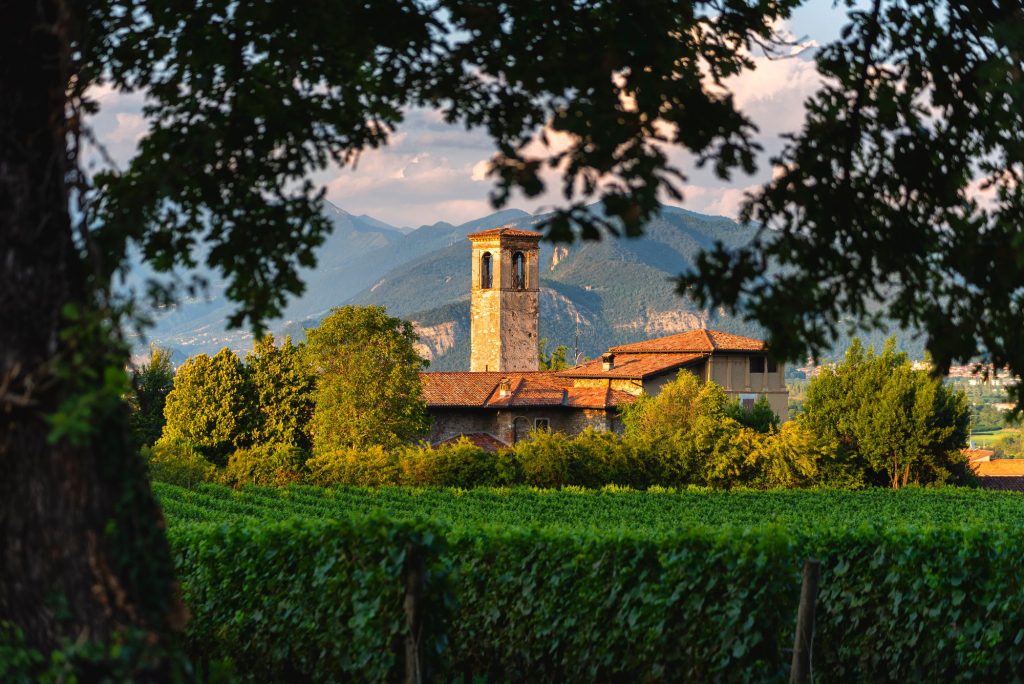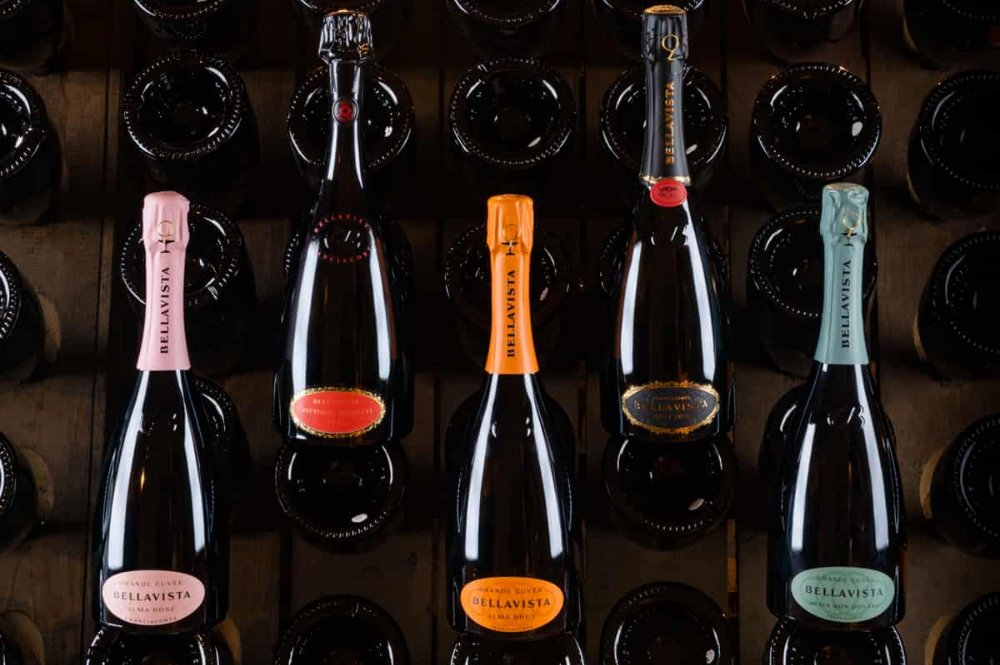
Piedmont’s Hidden Reds: Beyond Nebbiolo
July 7, 2025
Discover Piedmont's hidden reds: beyond Nebbiolo, explore the rich history of Dolcetto and its impact on local wine culture.
By: Sara Porro / Last updated: June 5, 2025
The traffic from Milano to Brescia, less than one hour east of Lombardy’s main city, is so heavy that the four lanes of the highway were eventually not enough, which led to the construction of a second highway along a slightly different route to the same destination. When stuck between horn-happy, towering trucks on the A4, it’s hard to believe you’re heading toward one of the most serene and bucolic areas of Northern Italy, but Franciacorta lies ahead.

As soon as you leave the highway, you’ll find yourself among its gentle hills, blanketed with vineyards where the excellent Franciacorta is produced (yes, both the region and the wine carry the same name). The shift in pace and atmosphere is profound. Along with Trento DOC further to the Northeast, this is one of Italy’s premier regions for sparkling wine. While comparisons to Champagne are somewhat lazy, clichéd, and not warmly welcomed by local producers, the sparkling wines made here were indeed closely modeled on France’s national champion.
After receiving its initial recognition as a Controlled Designation of Origin in 1967, Franciacorta became the first Italian wine region and bottle-fermented wine to earn the prestigious Controlled and Guaranteed Designation of Origin or DOCG in 1995,
In addition to the bottle refermentation method—which in Italy is indicated with the name Metodo Classico, or “Classical Method”—the resemblance to Champagne continues in the grape varieties chosen: It is made from Chardonnay and Pinot Nero, with the addition of Pinot Bianco (there is no Pinot Meunier in Italy) and the native Erbamat grape.
Learn more about Erbamat in our Franciacorta wine region profile.
Franciacorta’s wine history is ancient and surprisingly recent—but don’t worry—it’ll all make sense in a moment, as I will explain below.
Vines have been grown in this territory since Roman times (if not earlier), and many documents from the Middle Ages refer to tax-exempt monastic lands in the territory.
The soil and climate conditions have always been ideal—the hills, the Oglio River to the west, and the last foothills of the Rhaetian Alps to the Northeast make for an excellent microclimate.
In 1809, the Napoleonic land registry recorded over a thousand hectares of land producing ‘vini mordaci,’ or “biting wines,” as they were defined by the Brescian doctor Girolamo Conforti in the “Libellus de vino mordaci.” This word is puzzling—scholars say it hints at what we now call the “crunchiness” of wine (fresh, vibrant, juicy, with crisp acidity and firm texture) —but it probably also indicated that these wines were already (or could be, at times) sparkling.
But the history of modern Franciacorta begins in the late 1950s, from the encounter of two brilliant minds, oenologist Franco Ziliani and Count Guido Berlucchi.
Franco Ziliani describes their first encounter:
“The butler escorted me to the living room of Palazzo Lana Berlucchi (…) Guido Berlucchi was at the piano. The Count closed the instrument, greeted me warmly, and began questioning me, a young winemaker, about improving his unstable white wine.
“I answered his questions without hesitation, and in greeting him, I dared to suggest: what if we made sparkling wine the way the French do?”
Berlucchi accepted Franco Ziliani’s proposal, and the two pioneers joined forces with their friend Giorgio Lanciani. After a few failed attempts, eventually, in 1961, 3,000 bottles of (what was then called) Pinot di Franciacorta were sealed. When uncorked the following year, the wines turned out to be excellent, marking the transition from the amateur stage to the modern style of Franciacorta.
Franciacorta’s rolling hills, situated between the Oglio River and the Alps, owe their ancient origins to glaciers that, retreating over 10,000 years ago, created the natural amphitheater that defines the region.
The soil’s morainic and marine origin gives it extraordinary richness and mineral variety, which, combined with its microclimate, allows for viticulture of the highest quality.
Franciacorta offers a range of expressions, each with its own character and aging profile:

Among the advantages of being a relatively recent denomination is that the Franciacorta producers have always been able to keep a united front. They knew it made little sense to fight alone for a bigger slice of the pie and more sense to join forces to make Franciacorta a recognizable brand.
The dynamic Franciacorta Consortium consistently spearheads innovation on behalf of its members, which has led to many positive developments, not only in branding but also in terms of innovation and sustainability. More broadly, the Consortium supports initiatives to regulate agrochemical use, measure carbon footprints, and promote vineyard biodiversity.
As a result, today, Franciacorta ranks among the leading appellations worldwide for organic viticulture, with more than 50% of organic vineyards (including parcels still in conversion).
But sustainability doesn’t end with ecology—the term means making a system “future-proof.” One of Franciacorta’s biggest challenges is climate change. This poses a challenge for Chardonnay, which tends to ripen increasingly early with compromised acidity. In response, an ancient native variety—Erbamat—has been included in Franciacorta’s DOCG regulations. Known for its pronounced acidity and late ripening, Erbamat offers at least a partial solution to the challenges posed by climate change.

Ca’ del Bosco—Ca’ del Bosco started out as a simple “house in the woods” (hence the name), purchased by Annamaria Clementi Zanella in the 1960s. Her son, Maurizio Zanella, transformed it into one of Franciacorta’s most celebrated estates. He eventually gave his beloved mother’s name to the estate’s flagship cuvée, Annamaria Clementi, which is only produced in exceptional vintages and aged extensively.
Bellavista—Founded in 1977 by entrepreneur Vittorio Moretti, Bellavista owns over 200 hectares of vineyards across the best Franciacorta hillsides. The Vittorio Moretti cuvée made only in the best vintages, is 100% Chardonnay, aged for at least seven years on the lees. Bellavista is also known for precision blending and elegant Satèn.
Barone Pizzini—Established in 1870, Barone Pizzini was the first Franciacorta producer to convert to organic viticulture in the early 2000s. The Animante cuvée, their organic multi-vineyard blend, shows freshness and minerality. The winery also focuses on biodiversity and carbon footprint reduction, with a state-of-the-art, eco-certified cellar built into the hillside.
Guido Berlucchi—As mentioned above, winemaker Franco Ziliani convinced landowner Guido Berlucchi to try bottle-fermenting sparkling wine, a daring proposal that led to the first Franciacorta in 1961. Their ’61 Nature cuvée, with no dosage and extended aging, pays homage to this moment.
Another crucial way Franciacorta wines resemble Champagne is their incredible versatility when paired with food. Ironically, the only things great sparkling wines don’t pair well with are those that popular culture tends to recommend: oysters (not ideal, the iodine leaves a coppery taste), strawberries, or the infamous pairing with cake (too much acidity, not enough sugar).
Everything else is game: from very simple and light antipasti to the mainstays of Northern Italian cuisine, roasted meats and pasta ripiena. With its silky mouthfeel and slightly higher sugar content, Satèn pairs exceptionally well even with international cuisine (yes, even sushi, which the Milanese eat more often than ‘risotto alla milanese’).
Want to keep it Italian? Franciacorta Rosè pairs wonderfully with pesto. For the perfect pairing with pizza, look for Extra Dry or Dry Rosé, which indicates a higher sugar content.
Franciacorta is one of my favorite day trips from Milano. I don’t even have to set my alarm early to be seated by noon in a frescoed Renaissance palazzo for a tasting of the full range of a producer’s wines. Then, afterward, a picnic in the vineyards or a stroll by Lake Iseo, where artist Christo built his Floating Piers—it feels like the makings of a perfect day.
If you would like us to customize an exclusive luxury tour, contact us and let us know your travel plans. We offer luxury food and wine tours for private groups of a minimum two guests. In addition, all of our private, chauffeured tours are available year-round upon request.

